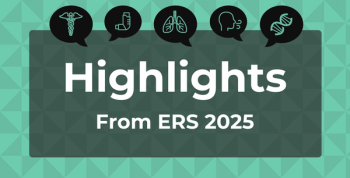
Claims Study Shows Better Glycemic Control, Less Switching With Canagliflozin Than Dapagliflozin
Authors report theirs is the first real-world study comparing the 2 SGLT2 inhibitors.
A recently published study that compared patients with type 2 diabetes (T2D) taking the highest dose of canagliflozin (Invokana, Janssen) with those taking the highest dose of dapagliflozin (Farxiga, AstraZeneca) has found that those taking canagliflozin achieved better glycemic control, were less likely to stop taking the medication, and were less likely to switch to another drug.
"Controlling blood glucose levels is central to diabetes treatment because it can reduce the risk of diabetes-related complications, such as kidney disease, retinopathy, and potentially cardiovascular disease," said Lawrence Blonde, MD, lead author of the study, in a statement. Blonde is the director of the Ochsner Diabetes Clinical Research Unit, Frank Riddick Diabetes Institute, in the Department of Endocrinology, Diabetes and Metabolism, Ochsner Medical Center, New Orleans, Louisiana.
“This first real-world analysis comparing SGLT2 [inhibitor] therapies in adults with type 2 diabetes showed that canagliflozin 300 mg each day allowed more patients to achieve blood glucose control [A1C <7%] than did a daily dose of dapagliflozin 10 mg,” Blonde said.
Researchers examined data from the Optum Clinformatics database, for patients making a first pharmacy claim for either a 300 mg dose of canagliflozin or a 10 mg dose of dapagliflozin. Data were examined from the period January 1, 2014, to September 30, 2016.
Of the more than 50,000 patients who started on at least 1 of the drugs during the period, 2546 met all the inclusion and exclusion criteria; from these, 558 patients who started on canagliflozin were matched with 558 who started on dapagliflozin. Patient data was compared at the start of treatment and at 6 months. Researchers found:
- At 6 months, a higher proportion of the patients taking high-dose canagliflozin achieved the study’s primary endpoint, which was achieving glycated hemoglobin (A1C) <8%; results were 70.8% for canagliflozin versus 59.1% for dapagliflozin, for an odds ratio (OR) of 1.60 (95% confidence interval [CI]: 1.26, 2.04, P = .0001). The 8% target is a minimum standard under the Healthcare Effectiveness Data and Information Set, known as the HEDIS measures.
- Also, a higher proportion of canagliflozin patients met the secondary endpoint at 6 months, of reaching A1C <7%, which is the recommended goal of the American Diabetes Association; 36.7% of canagliflozin patients met this goal compared with 25.1% of dapagliflozin patients, for an OR 1.75 (95% CI, 1.34,2.27; P <.0001).
- The mean A1C reduction with canagliflozin was —1.17% with canagliflozin 300 mg, compared with –0.91% with dapagliflozin 10 mg, for a difference of –0.26%.
- Patients in the canagliflozin group were less likely to discontinue treatment, with an OR 0.75 (95% CI, 0.57, 0.99; P = .0400), and the canagliflozin group was also less likely to switch medications, with an OR of 0.72 (95% CI, 0.54, 0.96; P = .0229). However, claims data do not state reasons why patients switch medications, which can include changes to the formulary.
The authors acknowledge that claims data do not reveal reasons for discontinuation on the drugs, but wrote, “These findings suggest that treatment with canagliflozin 300 mg vs dapagliflozin 10 mg may help more patients with T2DM achieve glycemic control in the real world, which may ultimately lead to fewer diabetic complications and improved outcomes.”
Reference
Blonde L, Patel C, Bookhart B, et al. A real-world analysis of glycemic control among patients with type 2 diabetes treated with canagliflozin versus dapagliflozin. [published online April 20, 2018]. Curr Med Res Opin. doi: 10.1080/03007995.2018.1458709.
Newsletter
Stay ahead of policy, cost, and value—subscribe to AJMC for expert insights at the intersection of clinical care and health economics.













































